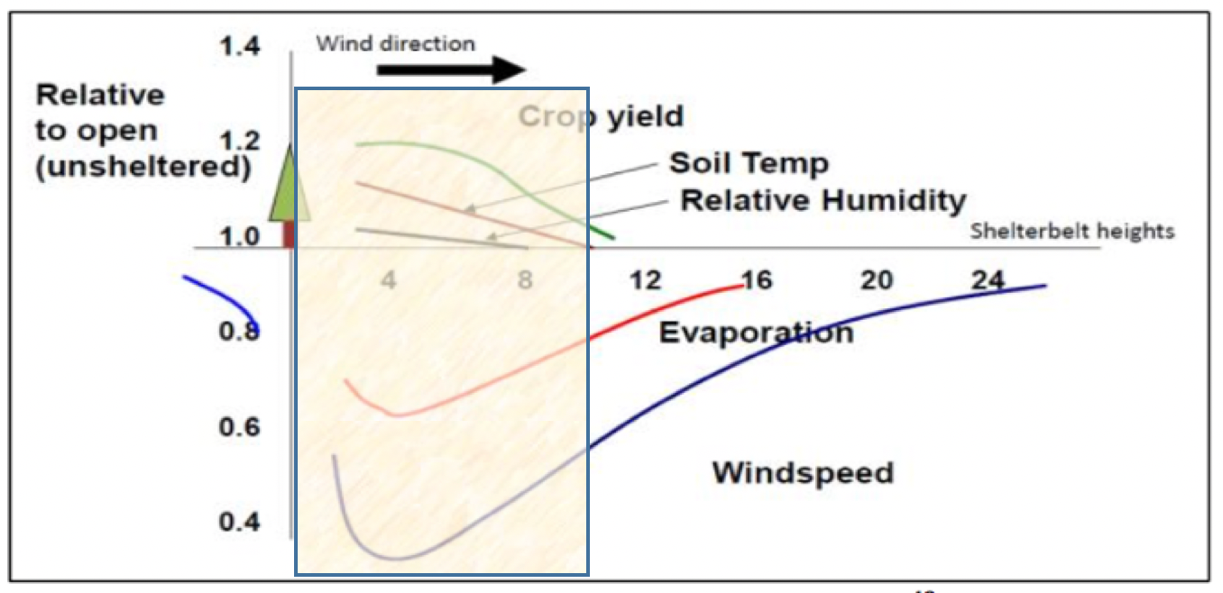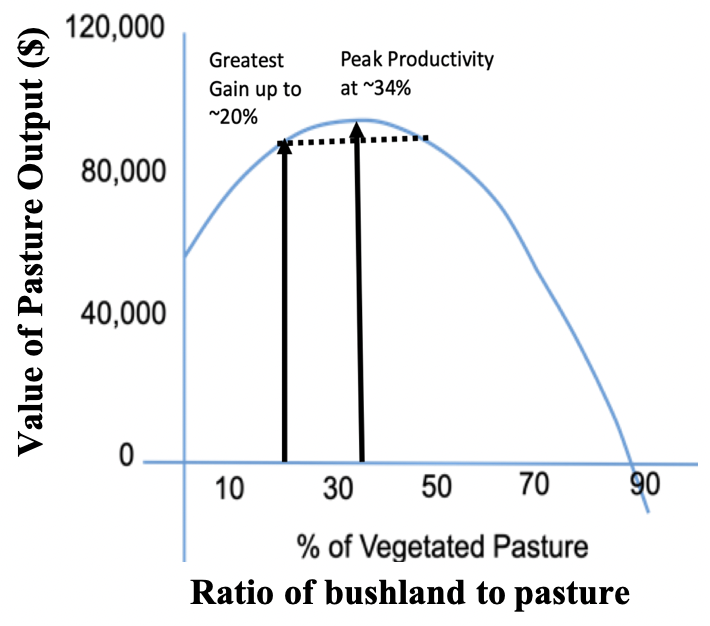Special Article- Revegetation for Improved Productivity and the Environment
“Although ‘human’ and ‘environment’ often are considered separately, they actually are integrally related. We depend on the ecosystem services provided by our environment for well-being and survival, and the environment depends on us for its preservation.”
The Main Creek Catchment Landcare Group has recently issued a comprehensive Property Revegetation Guide to provide state of the science information on approaches to, and benefits arising from a carefully planned and executed program of revegetation on rural properties. Included are:
- Best practices for: Shelterbelts, Bush Patches, Riparian Areas, and even Paddock Trees
- The environmental benefits
- The agricultural benefits from ecosystem and biological services that are achieved, including (see images below):
- wind and thermal protection (up to 50% reduction in wind speed)
- improved water infiltration and retention (typically the equivalent of 11 mm of additional rainfall through the growing season)
- a sustainable and more liveable environment (reduced climate change impacts, increased carbon sequestration)
- enhanced biodiversity and ecological services
- Improved land productivity (see below)
- cooler water and improved water quality (substantial reduction in nitrogen and phosphates that cause considerable harm to waterways and dams)
- the benefits of revegetation for biolinks and the larger environment
- The substantial community-wide benefits that result from providing biolink corridors (e.g. improved water quality and increased climate change resilience, and providing habitat connectivity for native species)
- An extensive reference list for those who would like to delve further.
Some snippets follow.

Improvements arising from installing well-designed shelterbelts. The vertical axis indicates the change compared to a bare paddock. The horizontal axis indicates distance downstream from the shelterbelt in multiples of the height of its tallest trees. Yellow indicates the zone of greatest benefit. Adapted from Marshall (1967).
Biodiversity is greatest for a mixture of bush and pasture of the type already found on the Peninsula, but only if both are properly managed. This biodiversity occurs because the transition zones between bush and pasture support a wide range of edge specialists, provide a refuge for pasture specialists, and support bushland species that venture out for food and water.

Adding areas of natural bush leads to substantial increases in farm productivity compared to just pasture. Documented experiences with various pasture-bush mixes has found that adding 20% bushland produces the greatest improvement rate, and the maximum occurs at 30-40% bush coverage.
Pasture productivity gain from the presence of natural vegetation (Walpole and Lockwood 1999).
Productivity examples include:
- Liveweight gains of up to 40% in sheep and 20-30% in cattle
- ~30% increase in wool production
- Reduction of up to 50% in lamb mortality
- Improved property capital value of 15-35%.
Use of local plant species is highly desirable. Using exotic species, such as cypress and pines, bring almost no biodiversity benefits, generally destroy native bushland in the vicinity, and when used as shelterbelts provide either very little or negative productivity improvement.
In summary: Carefully-considered regeneration of natural bush patches and shelterbelts is a classical win-win situation – substantial benefits occur for both our much-threatened native species and farm productivity.
Want more? Check out the full document here, or contact Greg Holland.